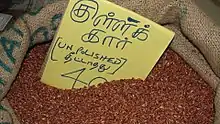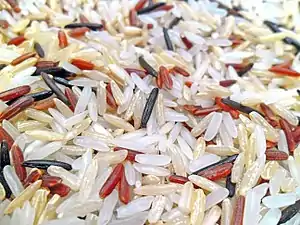Kullakar rice
Kullakkar rice is an ancient rice variety, grown primarily in India. It is one of the red rice varieties grown in India.

This rice is indigenous to India which is naturally hardy and pest resistant reducing the dependence on pesticides. Its growing duration is short, and can therefore be grown throughout the year in all 3 seasons. Indigenous rice is not needy; different varieties have adapted themselves to different land conditions from alkaline soil to saline soils, and in drought prone areas and waterlogged areas.
It possesses antioxidant properties, and has higher zinc and iron content than white rices. Kullakkar rice contains complex carbohydrates that are good for health. It is now known that flavonoid and anthocyanin compounds are closely related to the antioxidation properties of black rice (Zhang et al. ., 2005). Oki et al. (2005) found that the DPPH (1,1-diphenyl-2-picrylhydrazyl) radical scavenging activity is higher in red rices than in black and white rices, and that this activity is correlated with polyphenols and proanthocyanidin content. Considering that the highest scavenging activity due to the presence of polyphenols is in red rices (Oki et al. ., 2005), red rices could once again find favour with health-conscious consumers. There is also a need for clinical validation of the medicinal value of red rices reported in ancient literature, and for research on food preparations such as poha (flake rice), noodles, and sewai (vermicelli) from red rices.
This rice is suitable to make idly, dosai and porridge.[1]
References
- "Online Organic Food Store | Organic Foods Shopping in India | OrganicDepot". www.organicdepot.in.
